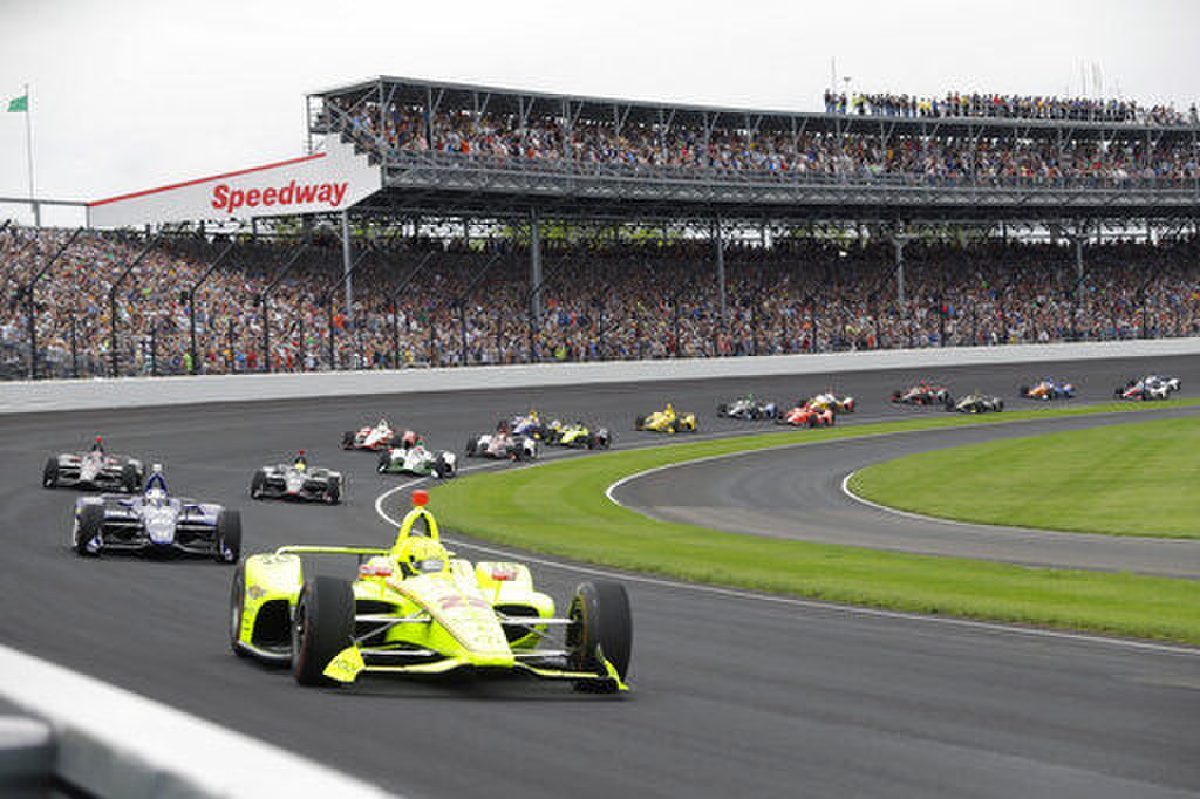
The Indianapolis 500 is the signature event of the state of Indiana, the biggest celebration, the most unifying annual scheduled holiday sporting occasion, so large in scope, so rich in tradition and so massive in presentation that we can all claim a little piece of it.
It had to happen in 2020. Bad enough the COVID-19 pandemic that has instigated so much havoc, pain and suffering, forced postponement from Memorial Day weekend and turned Aug. 23 into a one-off replacement holiday.
At least there will be a Greatest Spectacle in Racing this year. We are in the midst of one of the worst non-war years in American history, under siege from a disease that has stubbornly insinuated its way into our air and infected millions and killed about 150,000 while paralyzing daily life in so many ways.
It means something to the people of Indiana for there to be an Indy 500, even in the worst of times. The automobile race that takes place annually in the world’s largest sporting venue spans generations.
[sc:text-divider text-divider-title=”Story continues below gallery” ]
Officials announced a few days ago that the 104th running of the Indy 500 will be run in front of spectators. Because the Indianapolis Motor Speedway is so huge, conducting the race at only 25% capacity still means up to 87,000 people can be accommodated with social distancing.
Concurrently, officials announced the race, which is always blacked out on TV and then run later on tape delay in the Indianapolis market, will be shown as it happens.
This is somewhat of a mixed message. At a time when the populace must be wary of exposure to a potentially deadly virus, race officials’ message is if you want to buy a ticket and join us at the track, you can do it. But if you would rather stay home and feel safer, you can still watch.
Those in charge gave the matter considerable thought or they would not have produced an 88-page plan to conduct the race and also emphasize safety as much as possible.
Attendees must wear masks during the race, but even prior to being admitted to the premises, ticketholders will have temperatures checked. Anyone who has a temperature of 100.4 or higher will be refused admittance.
Each fan entering the speedway will be handed what is described as a package holding a mask and hand sanitizer.
Mark Miles, president and chief executive officer of Penske Entertainment Corp., medical expert Dr. Ed Racht and J. Douglas Boles, president of the speedway, conducted a joint press conference to explain how the details were worked out.
“We believe it’s important we have a race, that we have this race to set a high standard and example for how people can come together today under the right procedures,” Miles said. “We’re re-engineering the way we function in a new normal in everything we do today. There are risks.”
Yes, there are risks, partially because people do not always follow the rules or best advice about staying healthy with Exhibit A being their ill-advised beach-going or silly cramming together elbow to elbow in indoor bars.
Racht issued a reminder some have ignored, based on witnessed behavior over the months since March.
“We now know in science, face coverings make a difference,” Racht said. “Culturally, we’re all realizing that’s an effective way to minimize transmission.”
NASCAR has experimented holding races with and without fans at some of its own gigantic tracks (though none as large as the IMS). A ceiling of 30,000 tickets was set at Bristol, which holds 140,000 people, but about 20,000 came.
Perhaps the combination of the virus’ virulence and free television will dissuade some fans from in-person viewing. But the Indy 500 is once a year, not just a regular race. It is the showcase of IndyCar. It holds a unique place in Hoosier hearts and is a bigger attraction and lure, likely even in a time of turmoil, than almost anything else that can be offered to Indiana residents.
None of this would be possible if not for the gargantuan size of the speedway. Miles reiterated the boggling truth the Rose Bowl, Churchill Downs, Yankee Stadium, Wimbledon and Vatican City could all fit inside the speedway.
Yet for all of the speedway’s vastness, Boles struck an accurate tone when he mentioned how the fans who come year after year become accustomed to its quirks and corners.
“Folks that come to the Indianapolis 500 know that it’s more than just a race, the facility is more than just a facility,” Boles said. “It is a 300-acre complex inside our gates that they feel very intimate (with) when they’re here.”
Boles is right. The speedway is the 500’s house and part of what makes it what it is.
